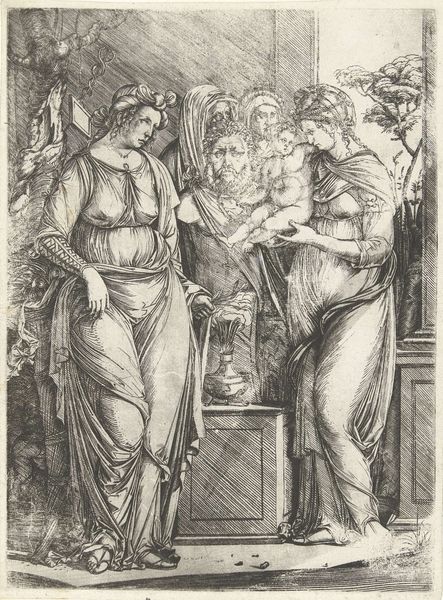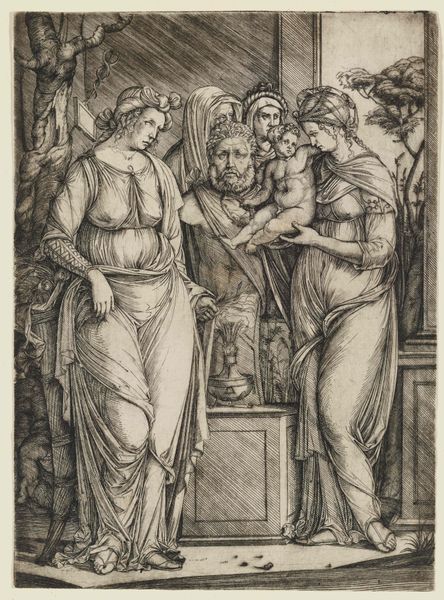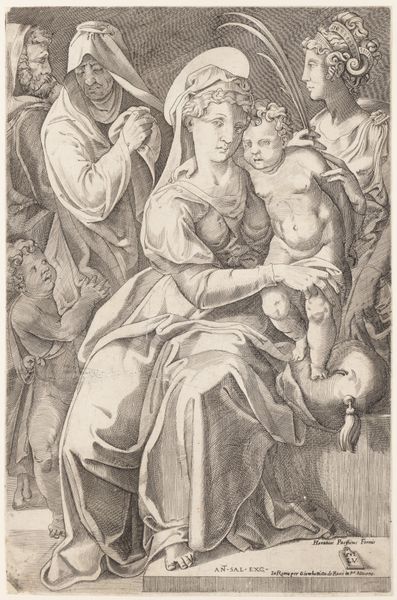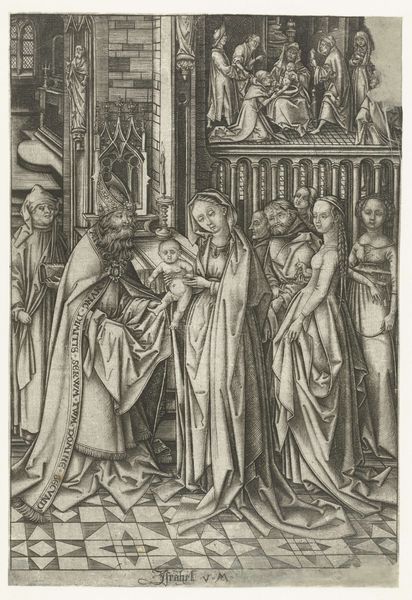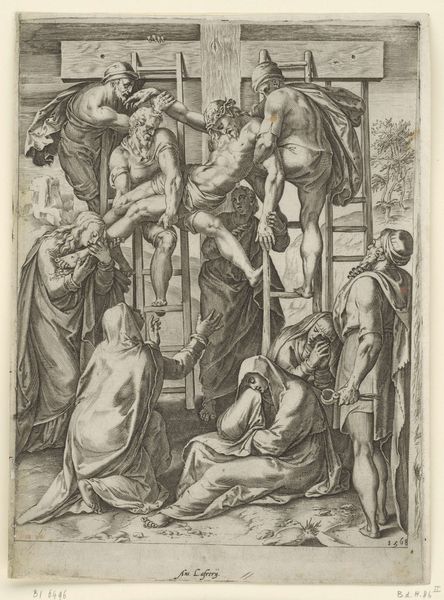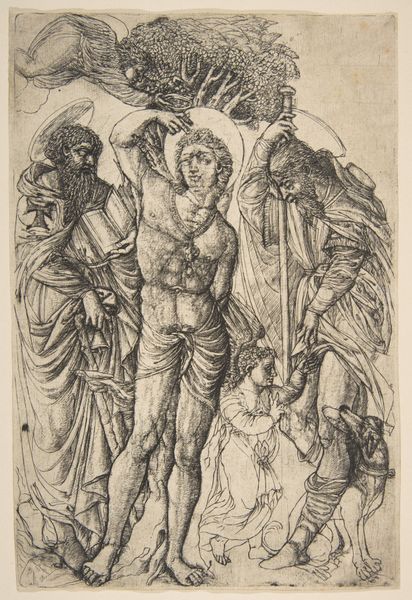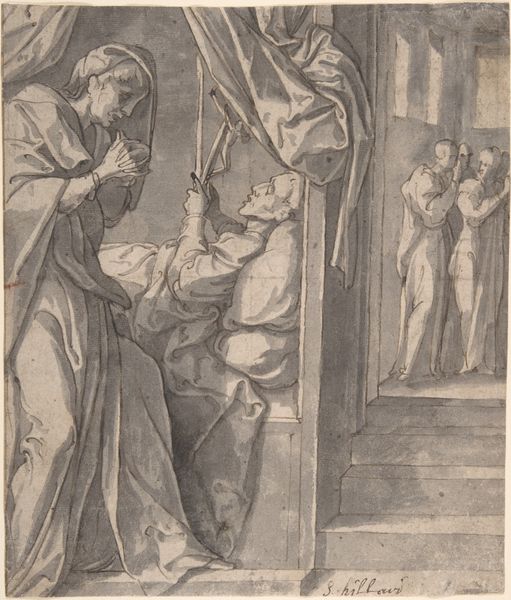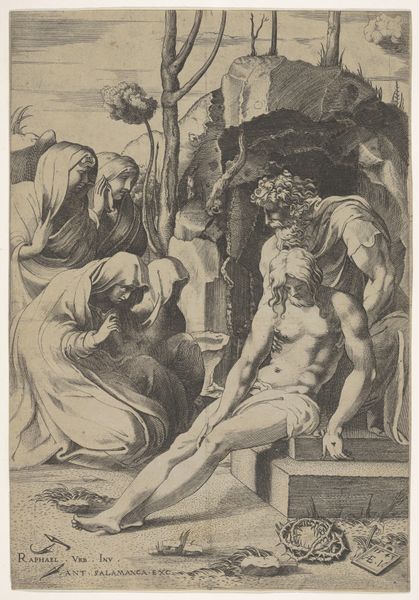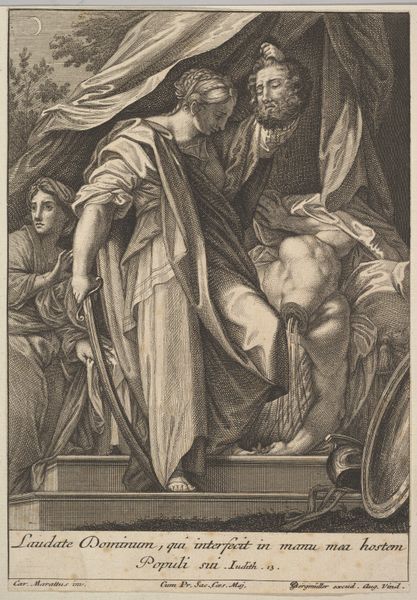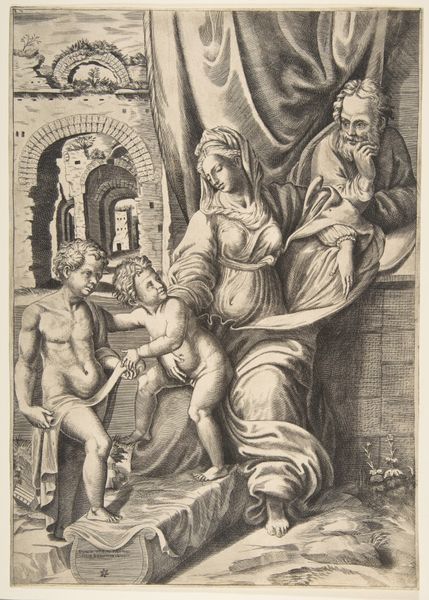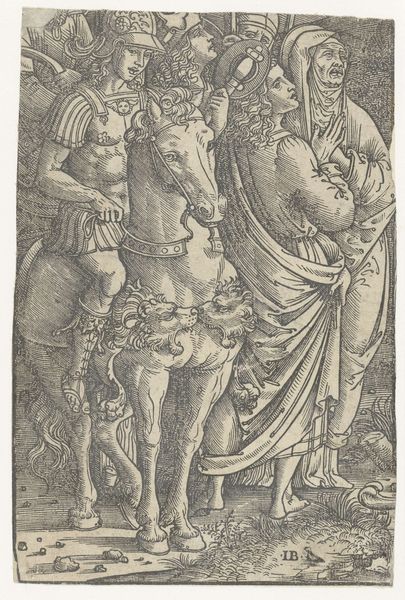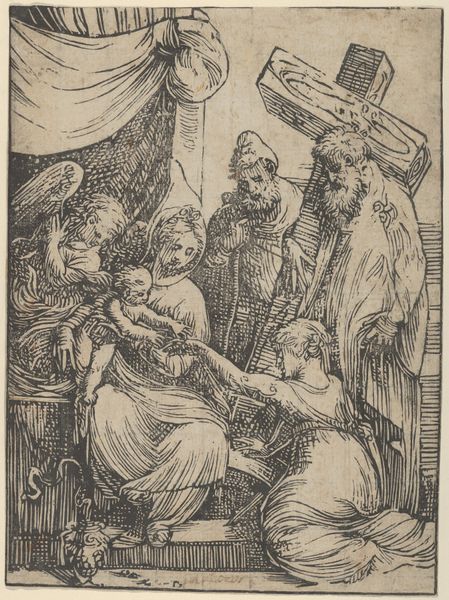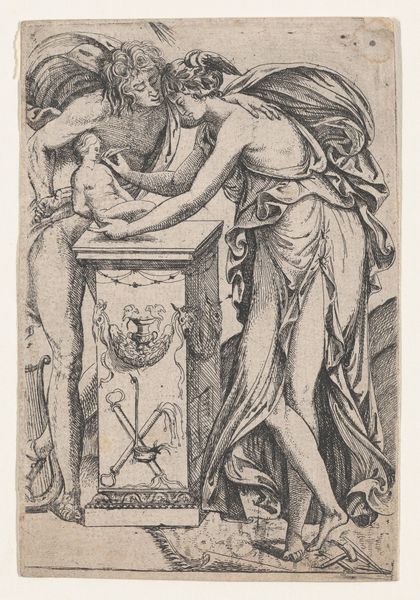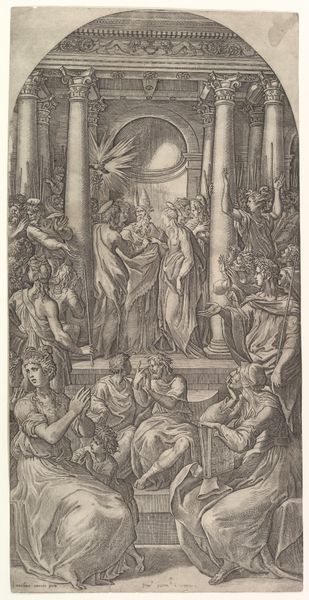
drawing, print, paper, engraving
#
drawing
# print
#
figuration
#
paper
#
history-painting
#
italian-renaissance
#
nude
#
engraving
Dimensions: 229 × 165 mm
Copyright: Public Domain
Curator: Jacopo de' Barbari's "Sacrifice to Priapus, the Large Plate," created around 1500, presents an intriguing scene rendered in engraving on paper. Editor: The tonal range is impressive for an engraving; it feels sculptural. There’s such depth in those drapes! But overall, I get a slightly unsettling feeling. Is it the gaze of the figures, or maybe the implied narrative tension? Curator: It’s a powerful example of how classical themes were being reinterpreted during the Italian Renaissance. De' Barbari was very interested in using his art to connect with classical antiquity and celebrate rediscovering greco-roman ideals and knowledge. Editor: And formally, this print exemplifies the Renaissance obsession with idealized human form. The elegant contrapposto, the almost mathematically precise rendering of anatomy… it speaks volumes about the era’s aesthetic aspirations. Curator: The print engages with a tradition of depicting pagan rituals, reflecting an aristocratic interest in humanist philosophy and mythology at the time. Editor: There's a potent juxtaposition there—the overt sensuality implied by the presence of Priapus, juxtaposed with a formal classical restraint that you so rightly highlighted. The very material and execution– that engraved line – both contains and reveals the classical form in potent ways. Curator: Absolutely. The circulation of prints like these also helped disseminate artistic ideas across Europe. Prints were also cheaper to produce at a bigger scale compared to paintings, thereby democratising artwork ownership. Editor: It leaves me pondering the balance between sensuality and intellectualism, something Jacopo clearly understands well! Curator: Yes, and it reminds us of the dynamic interplay between classical ideals and the evolving cultural landscape of the Renaissance.
Comments
No comments
Be the first to comment and join the conversation on the ultimate creative platform.
